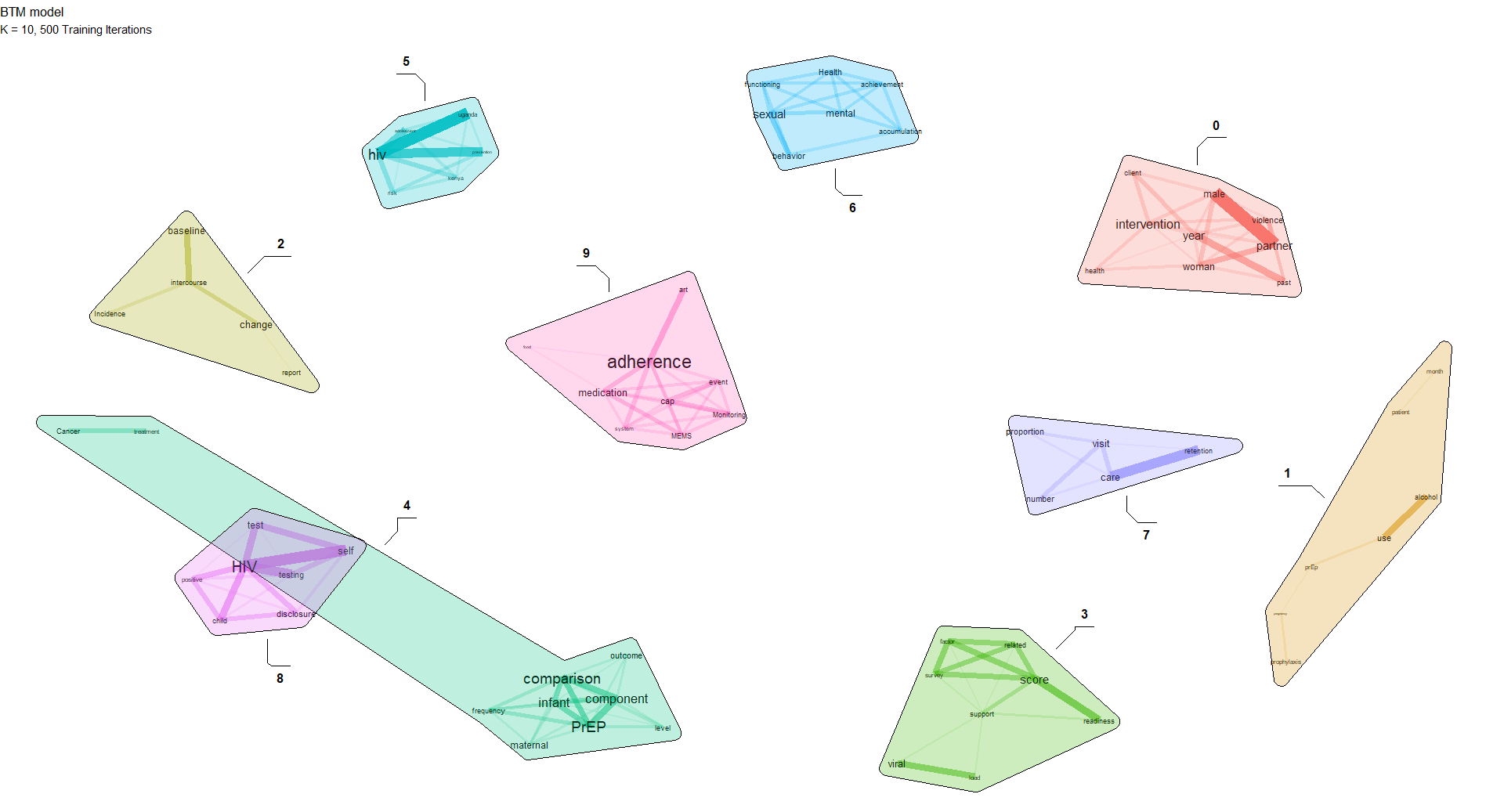Introduction
In 2008, Coates et al. published Behavioural Strategies to Reduce HIV Transmission: how to make them work better. This article highlights the scope of Behavioural Interventions and their importance in reducing HIV transmission.
In the clinical trial space, behavioural intervention trials design strategies that are essential in changing the health practices of a population. Despite numerous rollouts of such trials, the incidence rate of the disease continues to be high, leading researchers to rethink the nature of designing behavioural interventions and adopting modern methods such as SMS and Internet services to reach the vast population better.

Objective
This post aims to shed some light on the distribution of topics for HIV Behavioural Intervention Clinical Trials done within the past 20 years in East Africa (Kenya, Uganda & Tanzania). The image below shows a sample of the studies done during this period, with the Primary Sponsors of the studies on the y-axis.
This analysis is meant to showcase the use of Topic models for extracting data from a corpus of medical data. In turn, it helps researchers have an overview of what has been happening over this period and form a basis for starting on other Trials.
Topic Models are a type of statistical language model used for uncovering hidden structures in a collection of texts.
- A BTM (Biterm Topic Models) and LDA (Latent Dirichlet Allocation) on the scientific title.
- A BTM and LDA on the intervention description.

BTM and LDA Models for Scientific title
A brief definition on what BTM and LDAs are.
- BTM - Finds topics incollections of short texts. It is a word co-occurrence based topic model that learns topics by modeling word-word cooccurrences patterns which are called biterms.
- LDA - This is a generative probabilistic model that assumes each topic is a mixture over an underlying set of words, and each document is a mixture of over a set of topic probabilities.


From the two sets of images, the first network representation of text data showcases the BTM analysis. It highlights the most common word co-occurrence that arises from the Scientific titles of the HIV studies.
i.e., BTM 9 has the words ‘adherence,’ ‘art,’ ‘medication,’ and ‘monitoring’; this represents a group of word co-occurrences in the scientific titles, giving a descriptive insight into the associations the researchers sought when developing the Scientific titles for their Trials.
Meanwhile, the LDA topics models also highlighted some relevant topics covered by the scientific titles.
i.e., Topic 9 had the following words: ‘adherence,’ ‘art,’ ‘suppression’, ‘improved,’ and ‘measured.’ It’s essential to note that the BTM and LDA outputs might not showcase similar results; however, they display a similarity in the topic output.
Nonetheless, given the many text inputs from the Scientific title, it provides an essential association of what is happening. Think of this as a Keyword search engine, but on steroids, it aggregates what appears most from the set of documents and highlights what is being actively discussed or communicated.
BTM and LDA Models for Intervention Description


A similar analysis holds for the Interventions Description section. In this case, we look at what methods the researchers used to develop an Intervention. The Intervention description details can be found in the study protocol, but going through all of them can prove time-consuming. Employing topic models gives us an edge in doing an overview of what might be the recurring theme.
What next?
With Chat GPT and Generative AI’s rise, leveraging NLP methods in different domains has been the order of the day. Integrating AI through the development of Clinical Trials will take center stage. The modern Clinical Researcher will seek to incorporate AI in their workflow to create innovative solutions for humanity.
Further Reading
- Coates, T. J., Richter, L., & Caceres, C. (2008). Behavioural strategies to reduce HIV transmission: how to make them work better. Lancet (London, England), 372(9639), 669–684. https://doi.org/10.1016/S0140-6736(08)60886-71